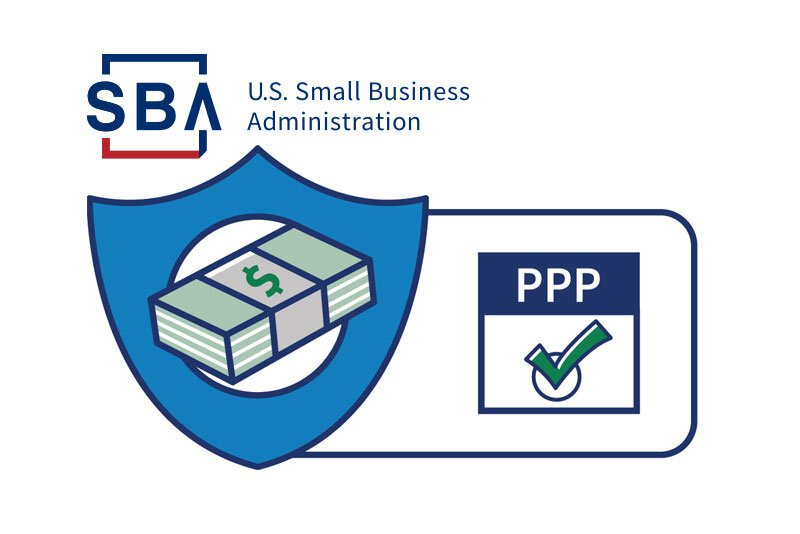There’s good news for recipients of the CARES Act Payroll Protection Program’s (PPP) loan. The loan, which provided funds for small businesses to retain employees through the pandemic, has been altered with more generous terms for forgiveness. The Flexibility Act was signed into law on June 5, 2020, and amends the CARES Act, changing PPP loan terms and requirements. Here’s how to make sure you follow the new rules for forgiveness.
How the Flexibility Act Modified PPP Forgiveness
The amount of money each business received from the Payroll Protection Program was based on the number of full-time workers (or equivalent) employed when the pandemic first hit. In the first rounds of funding, the entire loan was considered forgivable if the conditions—the funds were to be used only for paying employees and eligible expenses—were met.
The borrower must repay any portion of the loan not used during the maturity period at a 1% interest rate. Any funds used for purchases outside the range of eligible expenses would also be considered unforgivable and must be paid back at a 1% interest rate.
The first amendment to the Flexibility Act concerns the period when the funds initially needed to be used. In the early stages of the pandemic, no one was certain how long the disaster would affect the marketplace, and borrowers were required to use the allocated funds within eight weeks of receiving payment. The Flexibility Act changed those terms allowing borrowers issued loans before June 5 two years to use funds. Borrowers receiving loans after June 5 have up to five years to use the funds and still be eligible for forgiveness.
The previous PPP forgiveness terms required 75% of the loan be used only for payroll costs, including salary, wages, tips, commissions, and benefits such as health care, retirement, sick pay, vacation, and family leave. The remaining 25% could be used for expenses such as a mortgage payment, rent, and utilities. The amended forgiveness terms are now 60/40, which means 60% can be used for payroll and 40% for eligible expenses.
Finally, the PPP Flexibility Act extends the deferral period for the borrower’s payments to the date the Small Business Administration (SBA) remits the borrower’s loan forgiveness amount to the lender. If the borrower does not apply for loan forgiveness, the deadline is 10 months after the end of the borrower’s loan forgiveness-covered period. Previously, the deferral period ended at six months.
Filling Out the Forgiveness Application
PPP Loan Forgiveness Applications are available through SBA-approved lenders, where you received your loan. Depending on your business entity, how much you borrowed, and the size of your business, you should use SBA Form 3508, SBA Form 3508EZ, SBA Form 3508S, or the lender’s equivalent form.
Prepare now by compiling the correct documentation. Here’s what you should be prepared to provide:
- Payroll documentation for all payroll periods during the forgivable covered period
- Bank account statements or third-party payroll service provider reports documenting the amount of cash compensation paid to employees
- Payroll tax forms for the covered period
- Payroll tax filings reported (IRS Form 941)
- State quarterly business and individual employee wage reporting and unemployment insurance tax filings reported, or that will be reported, to the relevant state
- Payment receipts, canceled checks, or account statements documenting the amount of any employer contributions to employee health insurance and retirement plans that the borrower included in the forgiveness amount
- Non-payroll documentation for eligible expenses incurred or paid during the covered period (business mortgage interest payments, business rent or lease payments, business utility payments). You must also show these same expenses existed before February 15, 2020.
Important to note: For S Corporations owners, health insurance costs should not be included when calculating payroll costs; however, retirement costs for S Corp owners are eligible.
Once the SBA reviews your loan, your lender will notify you of the forgiveness decision and what you owe, if anything. If you also received an EIDL advance for your business, the SBA will deduct the advance amount from the forgiveness amount.
Safe Harbors for PPP Borrowers
To help PPP borrowers meet the requirements for forgiveness, the SBA has enacted several “Safe Harbor” provisions.
- You can calculate the number of full-time employees by three different reference periods to prove employee retention (whichever benefits your business best). Those periods are February 15, 2019, to June 30, 2019; January 1, 2020, to February 29, 2020; or 12 consecutive weeks between May 1, 2019, and September 15, 2019 (seasonal employees).
- If you had to lay-off some employees after receiving PPP funding, you could still receive forgiveness if your business had to shut down (partially or fully).
- Businesses that reduced their number of employees between February 15, 2020, and April 26, 2020, have until December 31, 2020, to reinstate the original number.
If you tried, in good faith, to reinstate those employees, but they either had moved on or refused to come back to work, you can still qualify for forgiveness by showing documentation proving your attempts, such as job offers or letters of resignation.
Finally, if you reduced employees’ wages more than the 25% allowed for forgiveness, you have until December 31, 2020, to get salaries back to the level they were at on February 15, 2020, or by the loan forgiveness application date (whichever is earlier).
Use PPP Schedule A Worksheet to determine if you qualify for safe harbor.
Good luck in obtaining forgiveness, and let CorpNet help you with any corporate documentation needed.





